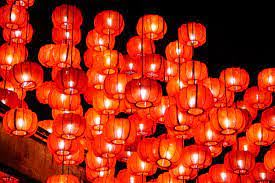Lunar New Year, also known as The Spring Festival or Chinese New Year, is the most important holiday in China and Chinese communities including Vietnam, Korea, Malaysia, and Singapore.
It is a two-week celebration that includes family and friends, feasting, fireworks, parties, and parades.
The date is determined by the lunar calendar. The holiday falls on the second moon after the winter solstice on December 21. Each year in China the New Year falls on a different date than on a Gregorian calendar. The date usually ranges between January 21 and February 20.
Chinese New Year has a history of about 3,500 years. The exact date isn’t recorded but some believe it originated in the Shang Dynasty. The date of the festival was fixed by the Han Dynasty. They established the first day of the first month in the Chinese lunar calendar.
The traditions of families getting together to clean their houses, have dinner, and stay up late on New Year’s Eve among common people was started by the Wei and Jin Dynasties.
The Tang, Song, and Qing Dynasties accelerated the development of the Spring Festivals most similar to the celebrations now including, setting of firecrackers, visiting relatives and friends, and eating dumplings which became an important part of the celebrations.
In 1912 the government decided to abolish the Chinese New Year and the lunar calendar adopted the Gregorian calendar and made January 1st the official start of the new year. In 1949 Chinese New Year was renamed Spring Festival and it is listed as a nationwide public holiday.
Before the official start of the holiday Chinese households are thoroughly cleaned. Cleaning symbolizes ridding the house of the previous year’s bad luck and making the home welcoming to good luck in the coming new year.
The days leading up to the Lunar New Year are also when the communities begin to decorate with red, red paint on the doors of businesses and homes and red cut-out paper lanterns. Red is the color of joy and good fortune in Chinese cultures and is strongly associated with New Year.
Alexis Cook, junior, said, “We usually have big dinners with all my family and we celebrate going to the new year.”
One of the traditional ways to begin is to have a reunion dinner when families get together to celebrate and share hopes for the New Year. Food is the most important culture in China. It is said that eating helps bring good luck and fortune.
During the New Year celebration, the official language in China is Mandarin. “Gong xi fa cai” is how Mandarin speakers wish you a happy New Year and it translates to “ wishing you to be prosperous in the coming year.
“During Vietnamese culture during the lunar new year, we do this tradition called Lai See which is a red envelope with money in it that older people give to children for good luck, wealth, and prosperity into the new year,” said Cook.
Some of the most common traditions include parties, firecrackers, and the famous lion dance. The most popular traditions amongst the younger generation are Red Envelope, Hong Bao in Mandarin, and Lai See in Cantonese.
Envelopes are where older men and women give red envelopes to unmarried adults and children to bless them with good wealth and fortune for the new year and fortune. The red envelope is considered to be more lucky than the money.
The third day is spent on dead relatives visiting their graves and lighting incense for them and it is considered bad luck to see family during this time. The seventh day is recognized as Renri the creation day for human beings to honor humanity’s connections to all living things they often eat yusheng which is raw fish
The Ninth day is the birthday of The Jade Emperor who is the ruler of heaven and they make offerings to him to give thanks.

The Beautiful Lantern Festival signals the closing to the Lunar New Year festivals. The paper lanterns light the way for lion dance and all day parades and festivals. The bright lights of the lantern festival celebrate the first full moon. The colorful lights are displayed outdoors and inside temples are too guide lost souls home.
The Lunar New year or Spring Festival is an important time for the Chinese communities filled with family traditions and ways to honor their gods, ancestors and the future generations.

Leave a Reply